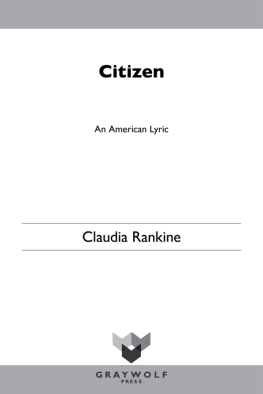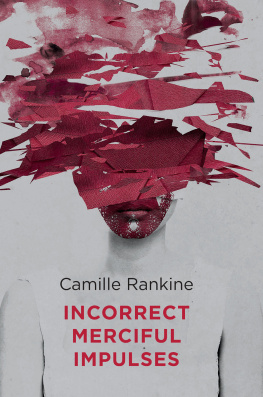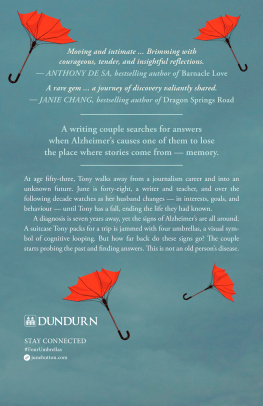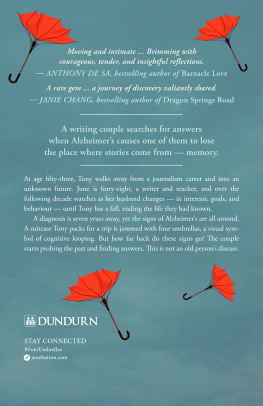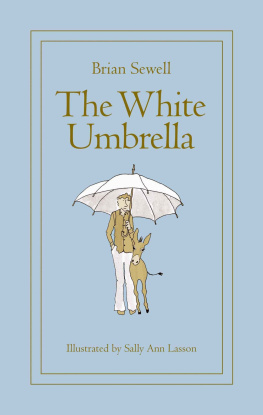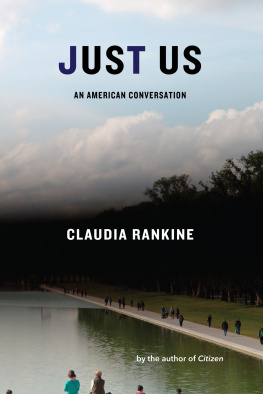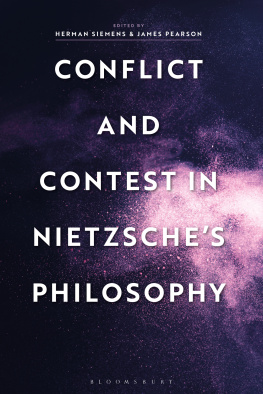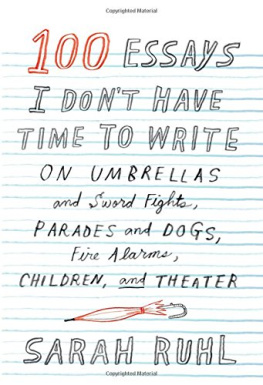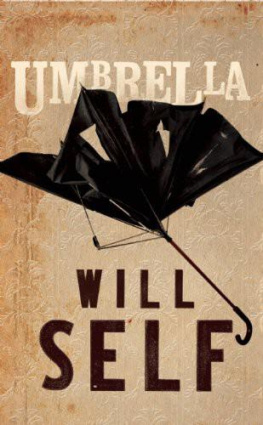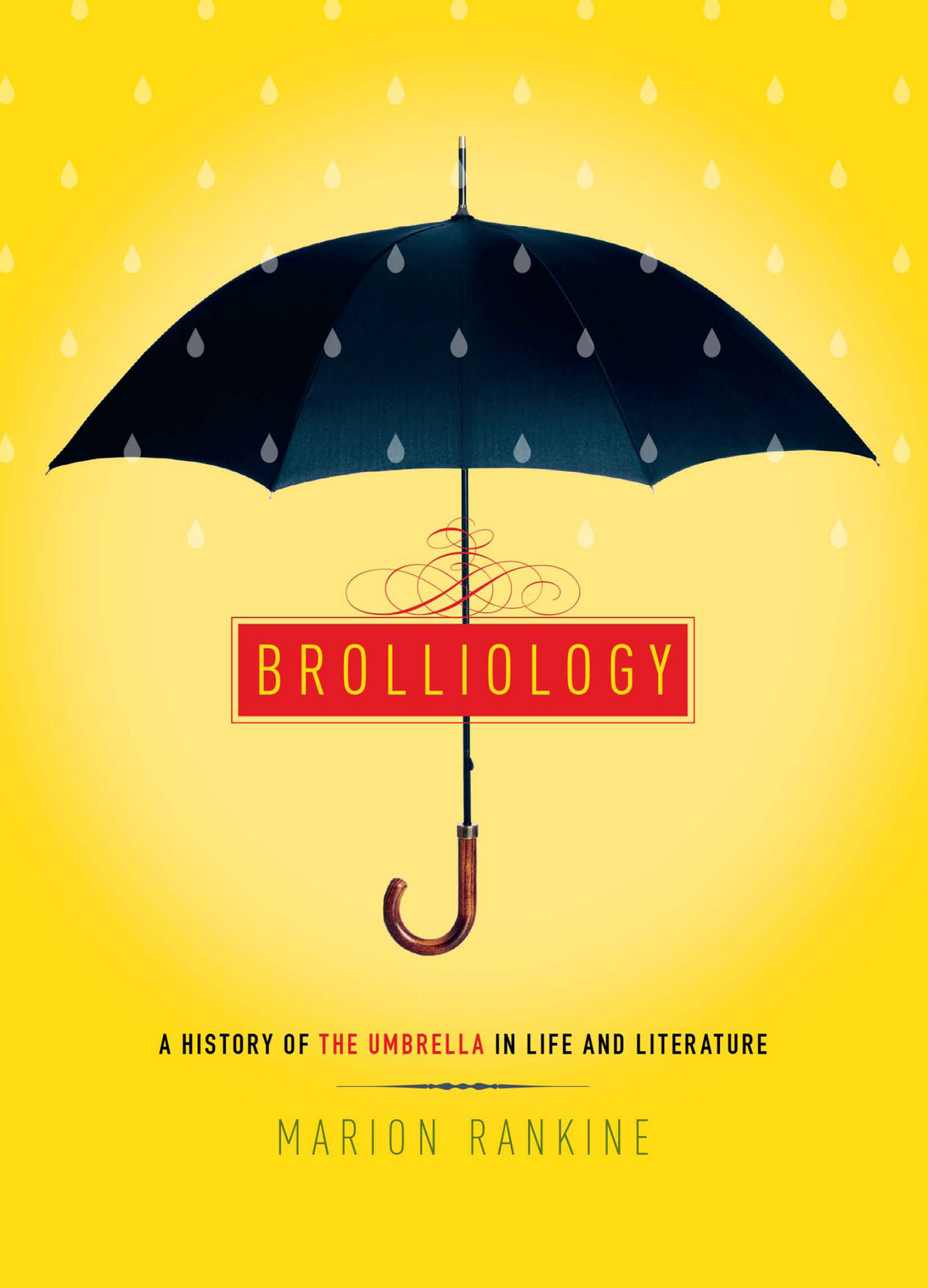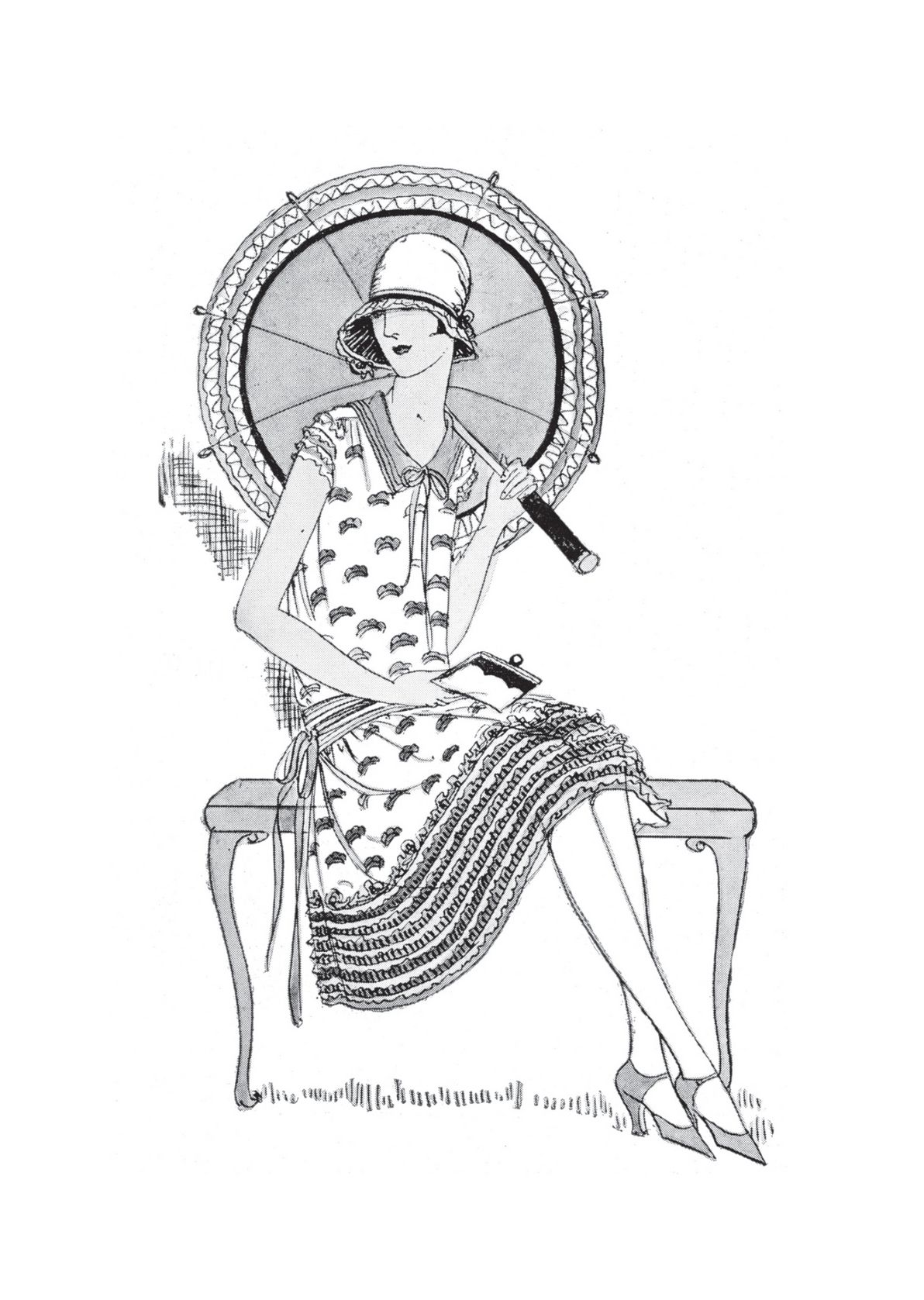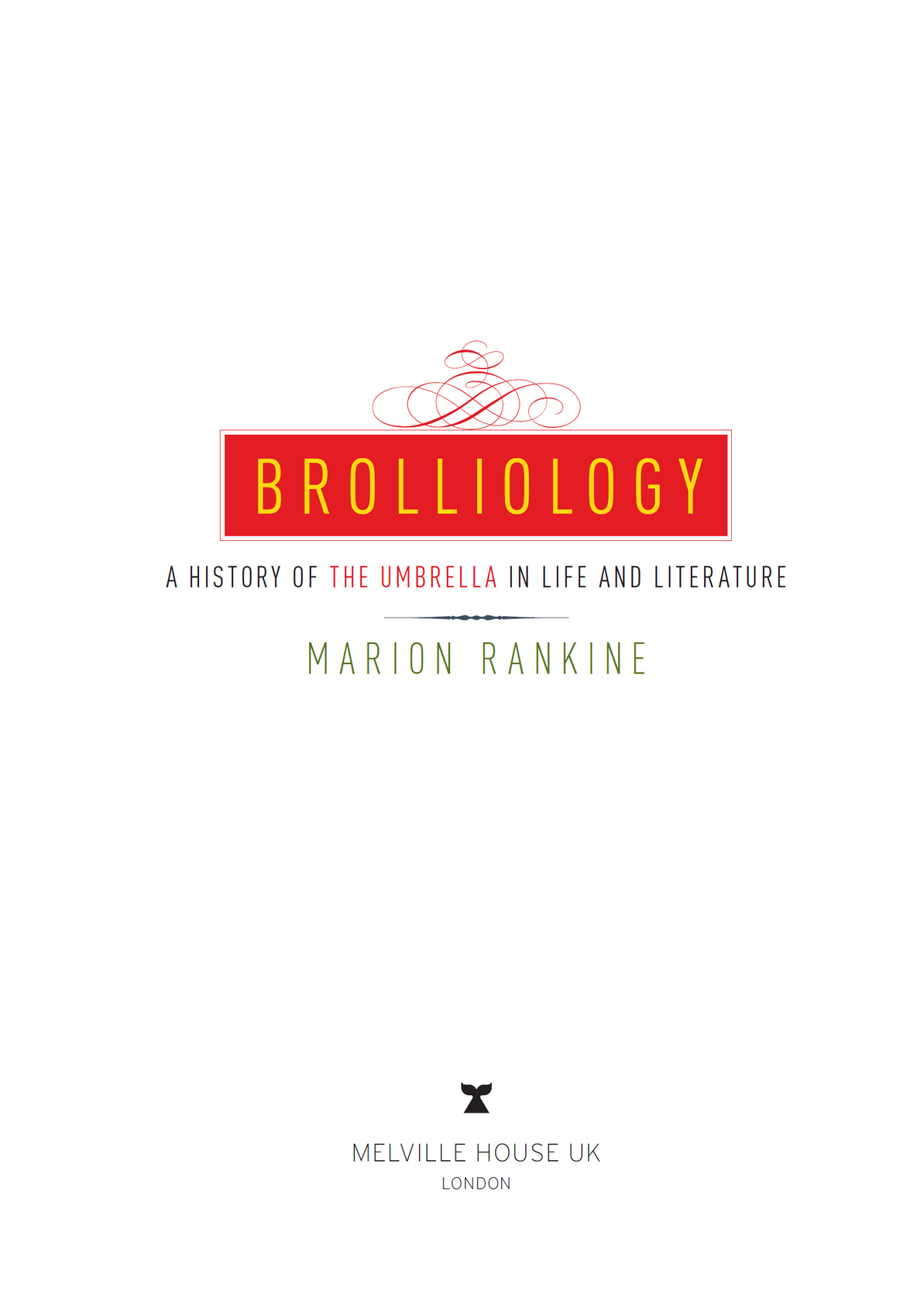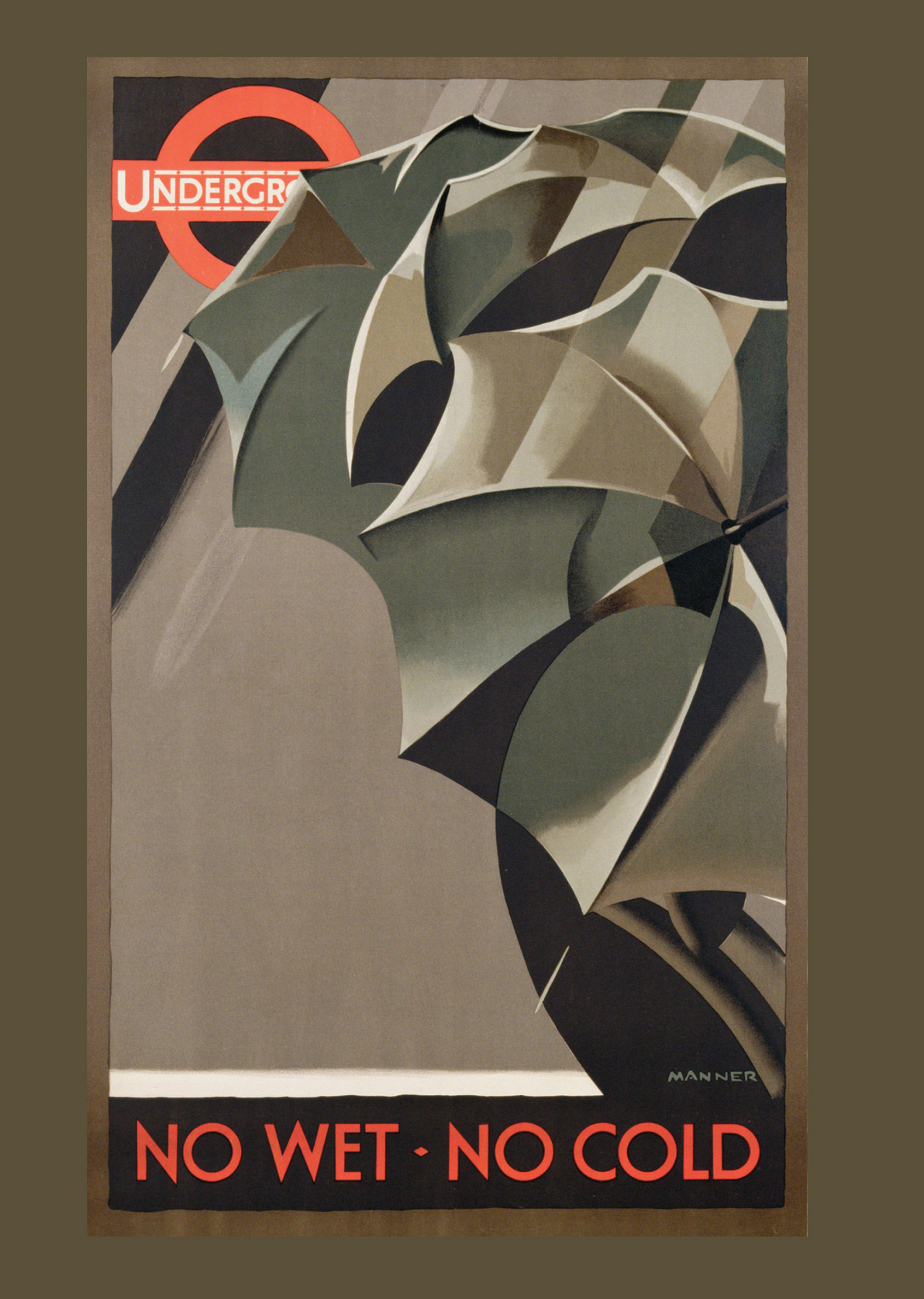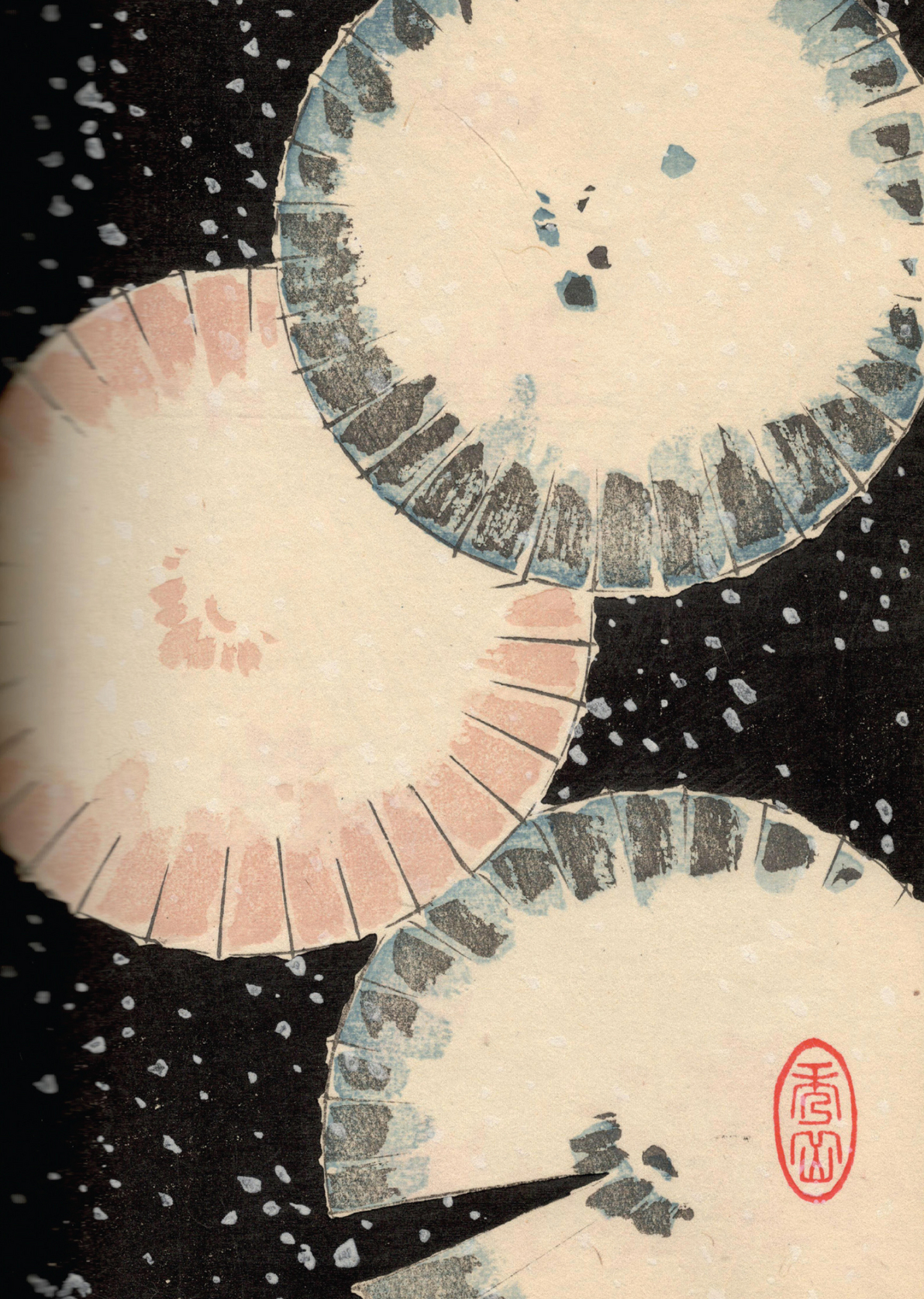Names: Rankine, Marion, author.
Title: Brolliology : a history of the umbrella in life and literature / Marion Rankine.
Description: Brooklyn : Melville House, [2017]
Identifiers: LCCN 2017020379 (print) | LCCN 2017046351 (ebook) | ISBN 9781612196718 (fixed format) | ISBN 9781612196701 (hardback)
Subjects: LCSH: Umbrellas in literature. | Umbrellas. | BISAC: HISTORY / Reference. | LITERARY CRITICISM / Reference.
Classification: LCC PN56.U43 (ebook) | LCC PN56.U43 R36 2017 (print) | DDC 391.4/4--dc23
LC record available at https://lccn.loc.gov/2017020379
Introduction BROLLYNESS
W HAT CAN GO up a chimney down, but cant go down a chimney up? Of all the childhood riddles I picked up in my first few years of school, this one has stuck with me the longest. Perhaps it was the absurdity of anyone wanting to thread an umbrella through a chimney that tickled me, or the enduring image of open umbrellas making mushrooms of chimney pots (we had a chimney, and the temptation to stick an umbrella in its top was not inconsiderable). Or maybe it was the realization that umbrellas, like flowers, have two states of beingfurled and openof which each state is mutually exclusive. A rolled-up umbrella may serve as a walking stick; an open one certainly wont. Likewise, a closed umbrella is of no assistance whatsoever when the clouds opensave in its potential to flower. What other common object enacts such a radical visual transformation when we put it to use?
This everyday act of transformation is, I believe, part of the charm of umbrellaness (or to adapt the British vernacular: brollyness.) And charm it undoubtedly is, for humans have been making, using, perfecting and decorating umbrellas for millennia. Umbrellas have been held over the heads of rulers, chieftains, kings, queens, priests, gods, nobles, revelers, clergymen, merchants, monks, clerks and lovers. They have been crafted from bamboo, paper, whalebone, steel, silk, cotton, alpaca, brocade and lace, and trimmed with jewels and precious metals. Umbrellas have appeared in countless movies and artwork for their sheer aesthetic appeal and their ability to create points of calm amidst pelting rain or swirling snow.
Umbrellas have also been written about: extensively, revealingly, delightfully. A couple of enthusiasts (one of them a famous umbrella-maker of his time) have even written histories of the object. Others have slipped umbrellas into their narratives the same way umbrellas slip in and out of our notice in everyday life: subtly, mostly; symbolically, often; and, occasionally, in life-changing, plot-altering ways.
Some years ago I was seized by the idea of writing about umbrellas in literature. My thought, at the time, was to write an essay: a brief tour of some of my favourite literary umbrellas, with a few notes on their function within the narrative. However, as I started to read around the subject, and delved into the history of umbrellas in cultures from ancient Egypt to present-day Britain, I swiftly realized that an essay would not suffice. The history of umbrellas is deep and far-reaching, and the meanings and symbolism attached to them vary wildly from century to century and place to place. The more I read, the more trails I found to other books, other angles, perspectives and dimensions. Odd though my subject was, it was spilling over the edges of any small form I tried to contain it in.
I came to realize that what I was attempting was not a catalogue of umbrellas in English-language literature.)and, I believe, contrary to the spirit of what was emerging from my ever-lengthening notes. After all, I wasnt simply fascinated with umbrellas in literaturemy interest lay rather with ideas of umbrellaness, both in the real world and the fictional, conceptual universes contained within books. It was not the objects themselvesbeautiful as they may bethat fascinated me, but the meanings behind them.
There are many facets of brollyness, and as I examined each one I found their reflections, or corollaries, in the literary examples collecting in drifts on my study floor. The way we write about things naturally reveals how we think about them and the meanings we attach to them, and the way we write about umbrellas is no exception. I read about umbrellas that are assiduously remembered, others that are forgotten; umbrellas wielded aggressively and umbrellas wielded meekly; umbrellas that disrupt convention and others that uphold it; umbrellas that protect and umbrellas that wound; umbrellas that betray more about a characters social standing than any other element in the narrative and umbrellas without which the narrative would not have been possible. The more I read about umbrellas, the more I became convinced that these objects occupy the very opposite of an everyday role in our reading: they are variously magical, comical, (dis)functional, (im)practical, invasive, liminal, and in all cases, indispensable.
This is a book that will nevercould neverbe complete. In the last days of cobbling together a final first draft, a colleague told me his favourite literary brolly was from


